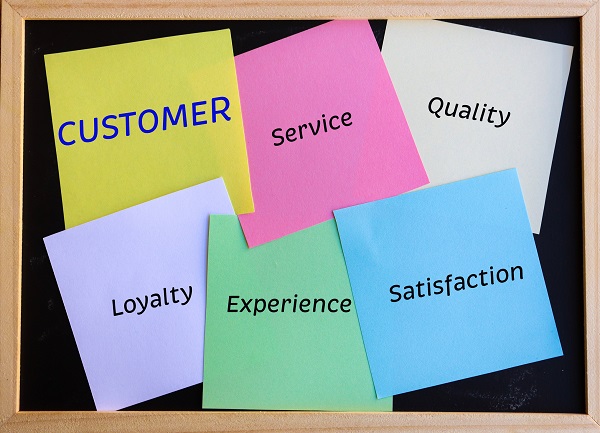June 2022
If your organisation has started to focus on customer experience, you are already heading for a positive outcome. To maximise your chance of success, it’s well worth putting together a plan – partly so you and your team can be sure you have covered all the topics but also to allow you to communicate and involve other teams across the business.
Setting up a plan to assess, measure and improve customer experience is always going to bring positive results. With a cohesive plan, it’s a great way to share learnings across the business, implement best-practice and track the results with a metric like your NPS score.
Here’s our top six steps to help you get started with the elements of your plan.
1. Set Realistic Objectives
Before you try and implement a complete customer experience improvement project, you should first define the goals and outcome you want to achieve.
These goals should be specific and measurable, as well as realistic objectives to help you measure each small change and assess its impact. Some example objectives could be:
- Improve your NPS score by a specific number
- Improve your customer retention by a specific percentage
- Grow your customer base by a specific amount
- Reduce the number of incoming customer complaints by a specific percentage
Choose realistic objectives that you feel can be achieved within the project timeframe. For example, doubling your NPS score in a month is unlikely to be achievable, whereas improving your NPS score by 10% in six months is much more achievable.
One advantage of realistic goals over a longer timeframe is that it gives you a chance to test new initiatives and if they do not work, you still learn about your customers and what drives their experience.
2. Understand your customer
One of the most important steps in improving customer experience is to understand your customer, their requirements and expectations. Without a clear understanding of why a customer needs your product or service and how it helps them, you will struggle to deliver consistent improvements in your customer experience.
It's worth following the basic steps to understand your customer persona and profile and how their requirements link to your products.
Once you have a clear description of the profile of your customer and what they are trying to achieve and how you organisation is involved in helping them, then you can start to optimise your products and services.
A common mis-communication is when a company focusses on and describes its products and features whilst a customer wants to know how it can help them and how it can improve their work. For example, if you customer requirements are mostly about timeliness of service but you are optimising on new features that take hours to setup, then there’s an obvious mis-match.
3. Map your customer journey
 You have profiled your customer and you understand their requirements; the next step is to map out the customer’s journey as they interact with your organisation.
You have profiled your customer and you understand their requirements; the next step is to map out the customer’s journey as they interact with your organisation. This customer journey mapping is essential in helping you understand each touch-point with every team in your business. It normally spans from initial sales effort and commercial engagement, through onboarding, to usage and then retention and support.
At each touch-point make sure you understand the customer’s requirements and how you can improve your response to these needs. By measuring the feedback at touch-points you can see how your changes are impacting the customer’s experience.
4. Set up analytics and feedback channels
Make sure you have setup accurate analytics to understand how customers use your product and services and, separately, a way of gathering regular measurable customer feedback.
If you have a website, then analytics might come from Google Analytics and you might add Events and Goals to understand how customers interact with different parts of your website and flow through the pages. If you have a shop, then the analytics might come from footfall and the till or ePos system and reflect the categories of products sold. For a service business, it might reflect the source through which a new customer has been acquired or the time taken to onboard.
For customer feedback channels, implement a regular NPS or CSAT survey and perhaps add specific feedback at key touchpoints in your customer journey.
Having a good set of analytics and data in place simplifies analysis and helps you understand how customer actions impact your goals.
5. Analyse and act on the Data
With your analytics showing customer flow and interaction, your customer journey map and your customer feedback results, you can now start to see how and where to make initial changes to improve customer experience. There might be some obvious big changes required or several small changes across the touch-points.
6. Evaluate and Iterate
It's well worth investing the time and effort to develop and run an effective CX campaign. As you make your changes and respond to the feedback with the aim of improving the customer’s experience, you can test new ideas and ways of working. Each time you implement a change, measure and evaluate then make any new changes and iterate. Some changes will work well, others might not work so well and need to be reversed, but if the overall momentum is an improvement in the customer satisfaction metrics then you and your teams have better understanding of your customer’s requirements and where to prioritise changes.
